Abstract
Addition of 2 mg of Pb2+/g of soil concident with or after amendment with starch or maltose resulted in 75 and 50% decreases in net synthesis of amylase and alpha-glucosidase, respectively. Invertase synthesis in sucrose-amended soil was transiently reduced after Pb2+ addition. Amylase activity was several times less sensitive to Pb2+ inhibition than was enzyme synthesis. In most cases, the rate of enzyme synthesis returned to control (Pb2+) values 24 to 48 h after the addition of Pb. The decrease in amylase synthesis was paralleled by a decrease in the number of Pb-sensitive, amylase-producing bacteria, whereas recovery of synthesis was associated with an increase in the number of amylase-producing bacteria. The degree of inhibition of enzyme synthesis was related to the quantity of Pb added and to the specific form of lead. PbSO4 decreased amylase synthesis at concentrations of 10.2 mg of Pb2+/g of soil or more, whereas PbO did not inhibit amylase synthesis at 13 mg of Pb2+/g of soil. Lead acetate, PbCl2, and PbS reduced amylase synthesis at total Pb2+ concentrations of 0.45 mg of Pb2+/g of soil or higher. The results indicated that lead is a potent but somewhat selective inhibitor of enzyme synthesis in soil, and that highly insoluble lead compounds, such as PbS, may be potent modifiers of soil biological activity.
Full text
PDF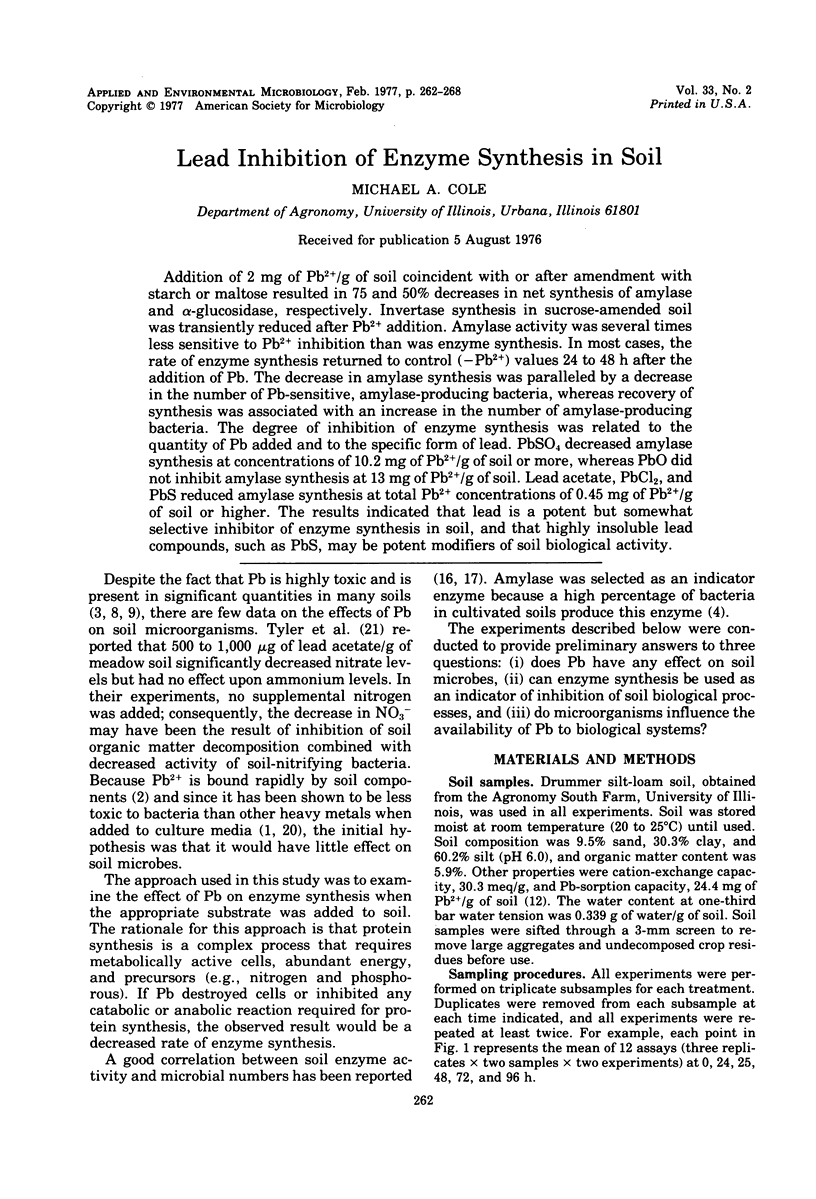
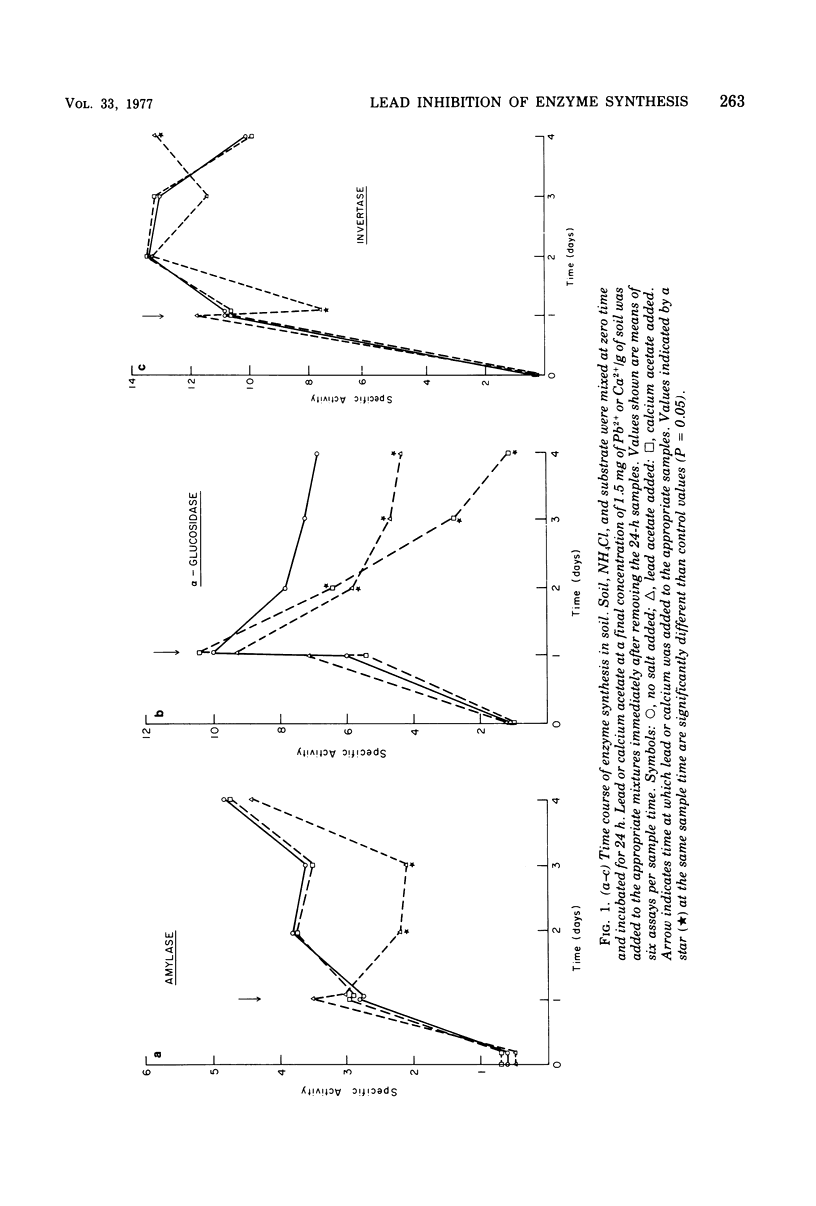
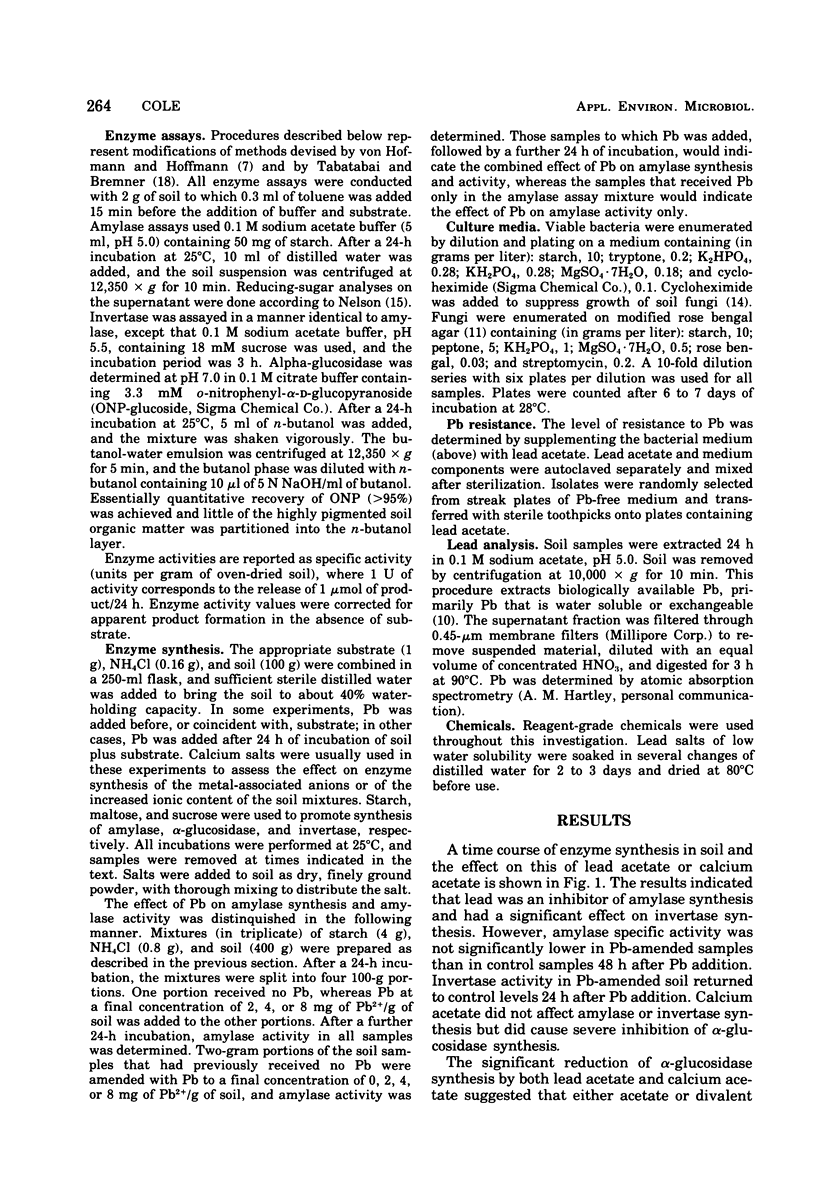
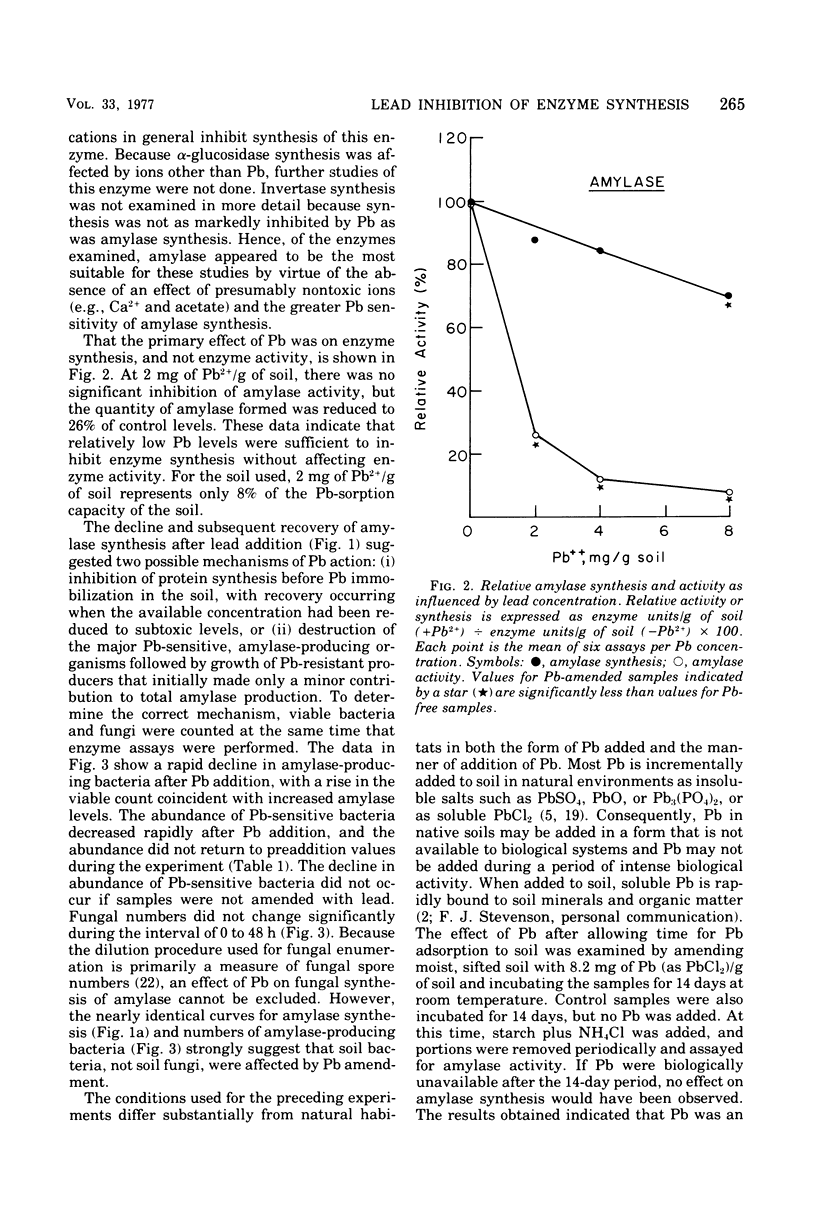
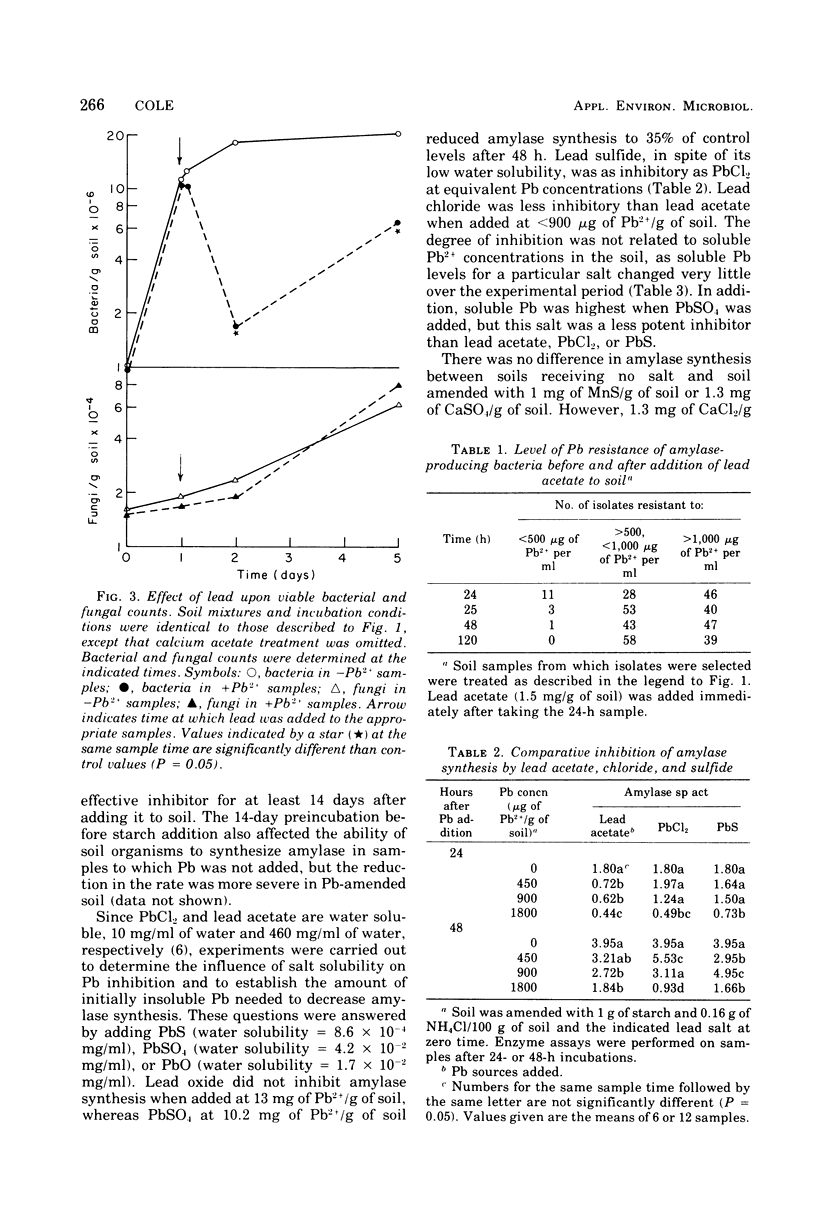
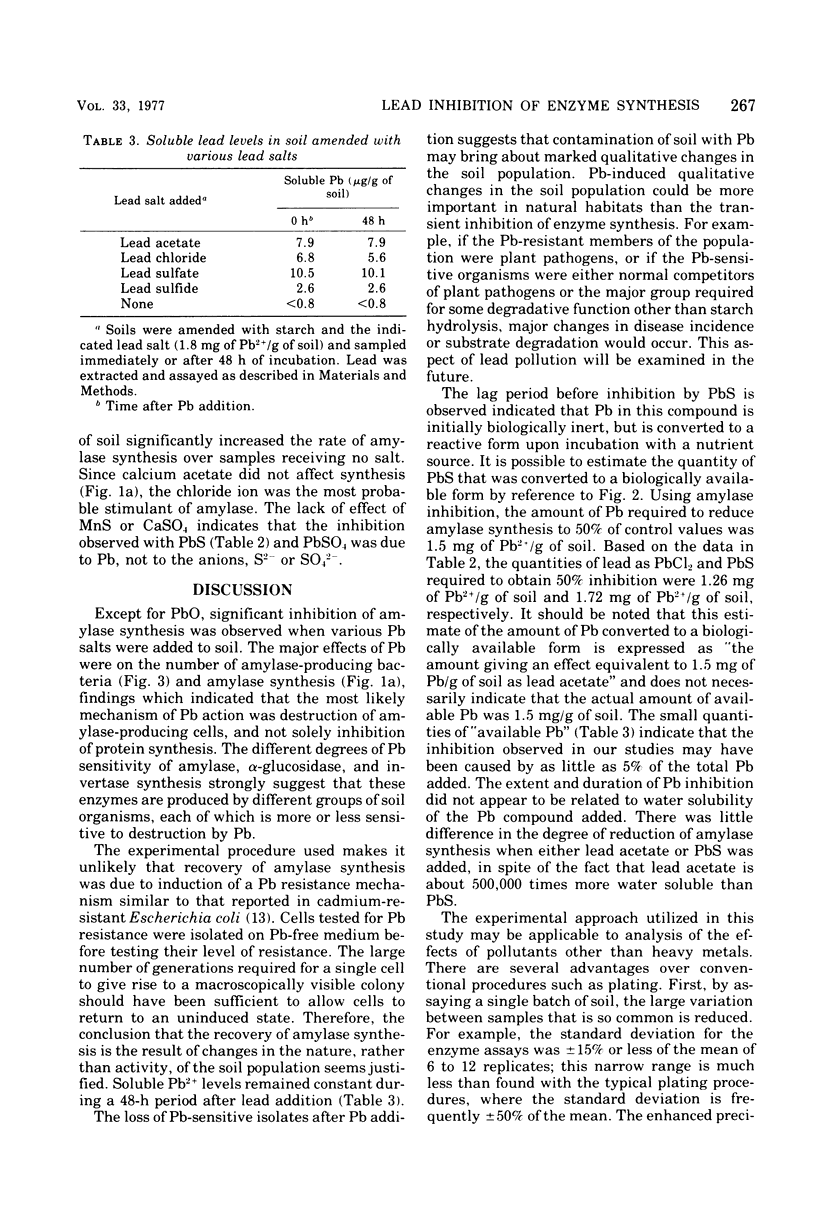
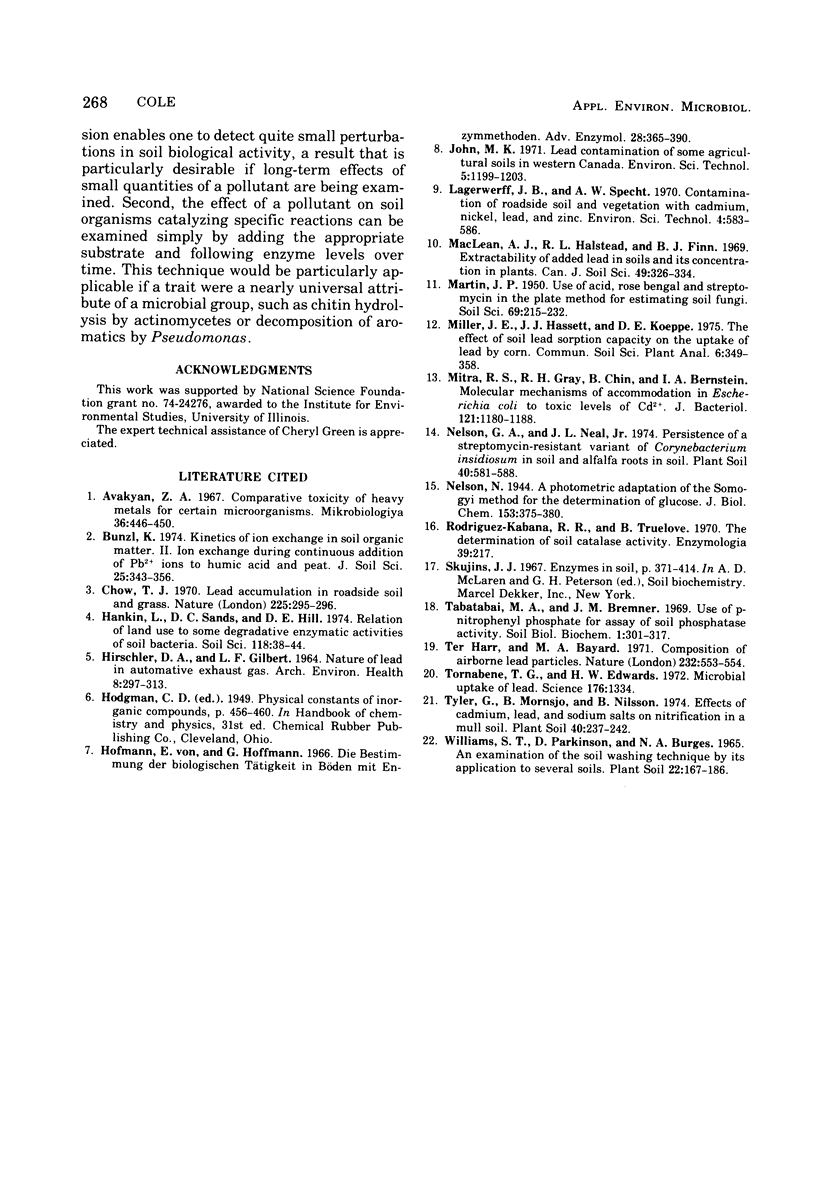
Selected References
These references are in PubMed. This may not be the complete list of references from this article.
- Avakian Z. A. Sravnitel'naia toksichnost' tiazhelykh metallov dlia nekotorykh mikroorganizmov. Mikrobiologiia. 1967 May-Jun;36(3):446–450. [PubMed] [Google Scholar]
- Chow T. J. Lead accumulation in roadside soil and grass. Nature. 1970 Jan 17;225(5229):295–296. doi: 10.1038/225295a0. [DOI] [PubMed] [Google Scholar]
- HIRSCHLER D. A., GILBERT L. F. NATURE OF LEAD IN AUTOMOBILE EXHAUST GAS. Arch Environ Health. 1964 Feb;8:297–313. doi: 10.1080/00039896.1964.10663670. [DOI] [PubMed] [Google Scholar]
- Hofmann E., Hoffmann G. Die Bestimmung der biologischen Tätigkeit in Böden mit Enzymmethoden. Adv Enzymol Relat Areas Mol Biol. 1966;28:365–390. [PubMed] [Google Scholar]
- Rodriguez-Kabana R., Truelove B. The determination of soil catalase activity. Enzymologia. 1970 Oct 31;39(4):217–236. [PubMed] [Google Scholar]
- Ter Haar G. L., Bayard M. A. Composition of airborne lead particles. Nature. 1971 Aug 20;232(5312):553–554. doi: 10.1038/232553a0. [DOI] [PubMed] [Google Scholar]
- Tornabene T. G., Edwards H. W. Microbial uptake of lead. Science. 1972 Jun 23;176(4041):1334–1335. doi: 10.1126/science.176.4041.1334. [DOI] [PubMed] [Google Scholar]


